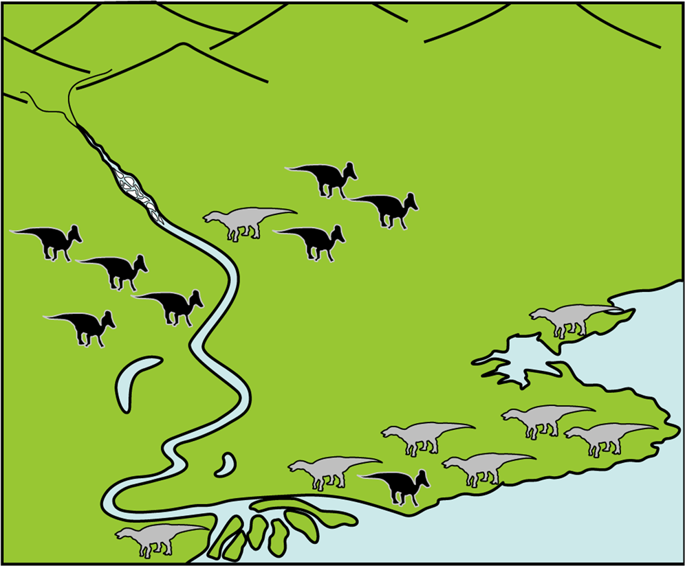@WFS,World Fossil Society,Riffin T Sajeev,Russel T Sajeev
The First Definite Lambeosaurine Bone From the Liscomb Bonebed of the Upper Cretaceous Prince Creek Formation, Alaska, United States
Scientific Reports volume 9, Article number: 5384 (2019)
The Prince Creek Formation of Alaska, a rock unit that represents lower coastal plain and delta deposits, is one of the most important formations in the world for understanding vertebrate ecology in the Arctic during the Cretaceous. Here we report on an isolated cranial material, supraoccipital, of a lambeosaurine hadrosaurid from the Liscomb Bonebed of the Prince Creek Formation. The lambeosaurine supraoccipital has well-developed squamosal bosses and a short sutural surface with the exoccipital-opisthotic complex, and is similar to lambeosaurine supraoccipitals from the Dinosaur Park Formation in having anteriorly positioned squamosal bosses. Affinities with Canadian lambeosaurines elucidate more extensive faunal exchange between the Arctic and lower paleolatitudes which was previously suggested by the presence of Edmontosaurus, Pachyrhinosaurus, tyrannosaurids, and troodontids in both regions. The presence of one lambeosaurine and nine hadrosaurine supraoccipitals in the Liscomb Bonebed suggests hadrosaurine dominated faunal structure as in the Careless Creek Quarry of the USA that was also deposited under a near-shore environment. It differs from the lambeosaurine dominant structures of localities in Russia and China interpreted as inland environments. This may suggest that lambeosaurines had less preference for near-shore environments than hadrosaurines in both Arctic and lower paleolatitudes.
@WFS,World Fossil Society,Riffin T Sajeev,Russel T Sajeev



 April 3rd, 2019
April 3rd, 2019  Riffin
Riffin 
 Posted in
Posted in  Tags:
Tags: 